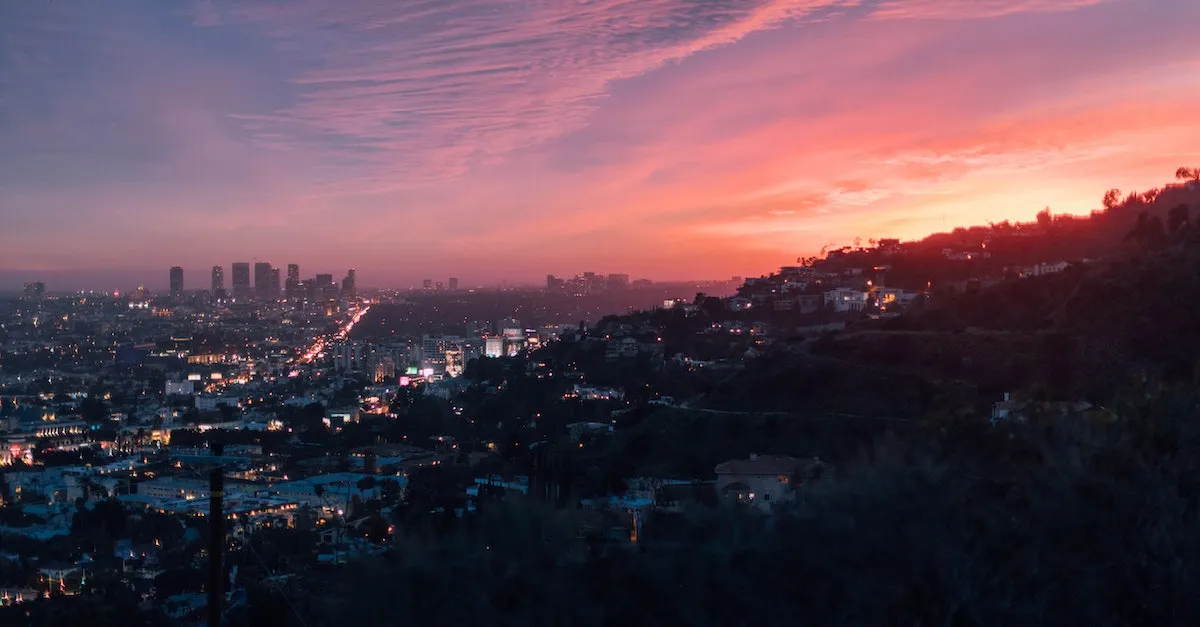How Big Is California? A Detailed Look At The Size Of The Golden State
California is the most populous and third largest U.S. state by area, located on the west coast of the United States. With diverse terrains ranging from scenic coastal beaches to majestic mountains to arid deserts, California has intrigued people for centuries with its sheer size and natural beauty.
If you’re short on time, here’s a quick answer to your question: California covers approximately 163,696 square miles of land area, making it the 3rd largest state in the U.S. after Alaska and Texas.
California’s Vast Geographic Area
California, also known as the Golden State, is renowned for its diverse landscapes and vast geographic area. Spanning from the Pacific Coast to the Sierra Nevada Mountains, this state boasts an impressive size that sets it apart from the rest of the United States.
Total Square Miles of Land
California covers a total land area of approximately 163,696 square miles, making it the third largest state in the country. To put this into perspective, it is larger than many countries around the world, such as Germany and Japan.
The immense size of California allows for a wide range of climates and ecosystems, from the arid deserts of Death Valley to the towering redwood forests of the north.
Comparisons to Other States and Countries
To truly grasp the enormity of California, let’s compare it to other states and countries:
| California | Germany | Japan | |
|---|---|---|---|
| Area | 163,696 sq mi | 138,988 sq mi | 145,936 sq mi |
| Population | Approximately 39.5 million | Approximately 83 million | Approximately 126 million |
As we can see, California’s land area surpasses that of both Germany and Japan. However, it is important to note that while California is geographically larger than these countries, its population is significantly smaller. This highlights the vastness and potential for growth within the state.
With such a large area to explore, California offers an abundance of outdoor activities and natural wonders. From hiking in Yosemite National Park to surfing along the coast, there is something for everyone to enjoy.
So next time you find yourself in the Golden State, take a moment to appreciate its vastness and the endless possibilities it holds.
California’s Length
When it comes to the size of California, one aspect that stands out is its remarkable length. Spanning a vast distance from north to south, California covers a significant portion of the western coast of the United States. Let’s take a closer look at just how long the Golden State really is.
North to South Distance
California stretches over 770 miles from its northernmost point to its southernmost point. This long stretch of land encompasses a diverse range of landscapes, from the rugged and majestic mountains of the Sierra Nevada to the stunning coastline along the Pacific Ocean.
It is no wonder that California offers such a wide variety of outdoor activities and breathtaking scenery.
Notable Cities Along California’s Length
As one travels along California’s length, they will encounter several notable cities that contribute to the state’s vibrant culture and economy. In the northern part of the state, cities like Redding and Sacramento offer a mix of natural beauty and urban amenities.
Moving further south, the bustling city of San Francisco captivates visitors with its iconic landmarks such as the Golden Gate Bridge and Alcatraz Island.
Continuing down the coast, one arrives at the vibrant and diverse city of Los Angeles, known for its thriving entertainment industry and world-famous landmarks like the Hollywood Sign and the Walk of Fame.
Further south, the city of San Diego awaits with its beautiful beaches, pleasant climate, and attractions like the San Diego Zoo and Sea World.
These cities, among others, showcase the rich tapestry of California’s landscape and culture as one travels along its impressive length. Whether you are seeking natural wonders, vibrant urban life, or a combination of both, California offers an unforgettable experience.
To learn more about California’s length and its various attractions, you can visit visitcalifornia.com, the official website for tourism in California, which provides comprehensive information for travelers looking to explore the Golden State.
California’s Diverse Natural Regions
California, also known as the Golden State, is not only the most populous state in the United States but also one of the largest in terms of land area. Its vast size encompasses a wide range of diverse natural regions, each with its own unique characteristics and landscapes.
Coastal Region
The Coastal Region of California stretches along the state’s western edge, from the rugged cliffs of Big Sur to the sandy beaches of San Diego. This region is renowned for its stunning coastline, picturesque coastal towns, and vibrant marine life.
Visitors can explore iconic landmarks such as the Golden Gate Bridge in San Francisco or enjoy sunsets over the Pacific Ocean in Santa Barbara. The coastal region is also home to several national parks and protected areas, including the Channel Islands National Park and the Point Reyes National Seashore.
Central Valley
The Central Valley is an expansive agricultural region located between the Coastal Mountain Ranges and the Sierra Nevada Mountains. This fertile valley is known as the breadbasket of California, as it produces a significant portion of the state’s agricultural products.
With its rich soil and favorable climate, the Central Valley supports a variety of crops, including fruits, vegetables, and nuts. It is also an important habitat for migratory birds, making it a popular destination for birdwatching enthusiasts.
Mountains Region
The Mountains Region of California is dominated by the majestic Sierra Nevada Mountains, which stretch for over 400 miles across the eastern part of the state. This mountain range is home to some of California’s highest peaks, including Mount Whitney, the tallest mountain in the contiguous United States.
The Sierra Nevada Mountains offer a plethora of outdoor recreational opportunities, such as hiking, skiing, and rock climbing. Visitors can also explore the stunning alpine lakes, cascading waterfalls, and ancient groves of giant sequoias found in this region.
Deserts
The deserts of California, including the Mojave Desert and the Colorado Desert, are characterized by their arid landscapes and extreme temperatures. These regions are home to unique ecosystems adapted to the harsh desert conditions.
Visitors can marvel at the otherworldly landscapes of Joshua Tree National Park or take a scenic drive along the iconic Route 66 through the Mojave Desert. Despite the challenging environment, the deserts of California are teeming with life, including various species of cacti, desert tortoises, and elusive desert bighorn sheep.
Exploring California’s diverse natural regions is like embarking on a journey through multiple climates and ecosystems within a single state. Whether it’s relaxing on the sandy beaches of the coast, immersing oneself in the fertile farmlands of the Central Valley, conquering the peaks of the Sierra Nevada Mountains, or experiencing the solitude of the deserts, California offers a wealth of natural wonders to discover.
California’s Major Cities and Population Centers
California is not only the largest state in the United States but also home to several major cities and population centers. Let’s take a closer look at some of these vibrant urban areas:
Los Angeles Metro Area
The Los Angeles metro area is the largest and most populous in California, with over 13 million residents. It includes the city of Los Angeles itself, as well as surrounding cities like Long Beach, Anaheim, and Santa Ana.
Known for its glamorous entertainment industry and iconic landmarks like the Hollywood Sign and Disneyland, the Los Angeles metro area is a cultural and economic powerhouse.
San Francisco Bay Area
The San Francisco Bay Area is another significant population center in California. It is comprised of cities like San Francisco, Oakland, and San Jose, and has a population of over 7 million people. The region is renowned for its technological innovation, with Silicon Valley being a hub for major tech companies.
The Golden Gate Bridge, Alcatraz Island, and the vibrant cultural scene make the Bay Area a popular destination for tourists and residents alike.
San Diego
Located on the southern coast of California, San Diego is known for its beautiful beaches, mild climate, and vibrant downtown area. With a population of around 1.4 million people, it is the second-largest city in California.
San Diego is home to several military bases, world-class universities, and attractions like the San Diego Zoo and SeaWorld.
Sacramento
Sacramento, the capital city of California, is situated in the northern part of the state. While not as populous as Los Angeles or San Francisco, it is still a significant urban center with a population of over 500,000.
Sacramento is known for its historical landmarks, including the California State Capitol building and the Tower Bridge. It is also a hub for government and agriculture, playing a crucial role in the state’s economy.
Others
In addition to these major cities, California is home to several other urban centers that contribute to the state’s diverse landscape. Cities like Fresno, San Bernardino, and Oakland are notable for their cultural, economic, and historical significance.
These cities offer a range of attractions, from championship sports teams to renowned museums and art galleries.
For more information on California’s major cities and population centers, you can visit the official websites of each city or explore reliable sources such as Visit California and U.S. Census Bureau.
Conclusion
In summary, California covers a vast geographic area as the third largest U.S. state. Stretching over 750 miles from north to south, California contains incredibly diverse landscapes and natural regions, from sunny beaches to arid deserts to snowy mountains. Major population centers like Los Angeles, San Francisco, and San Diego contribute to its standing as the most populous state. The Golden State intrigues with its sheer size and beauty.








